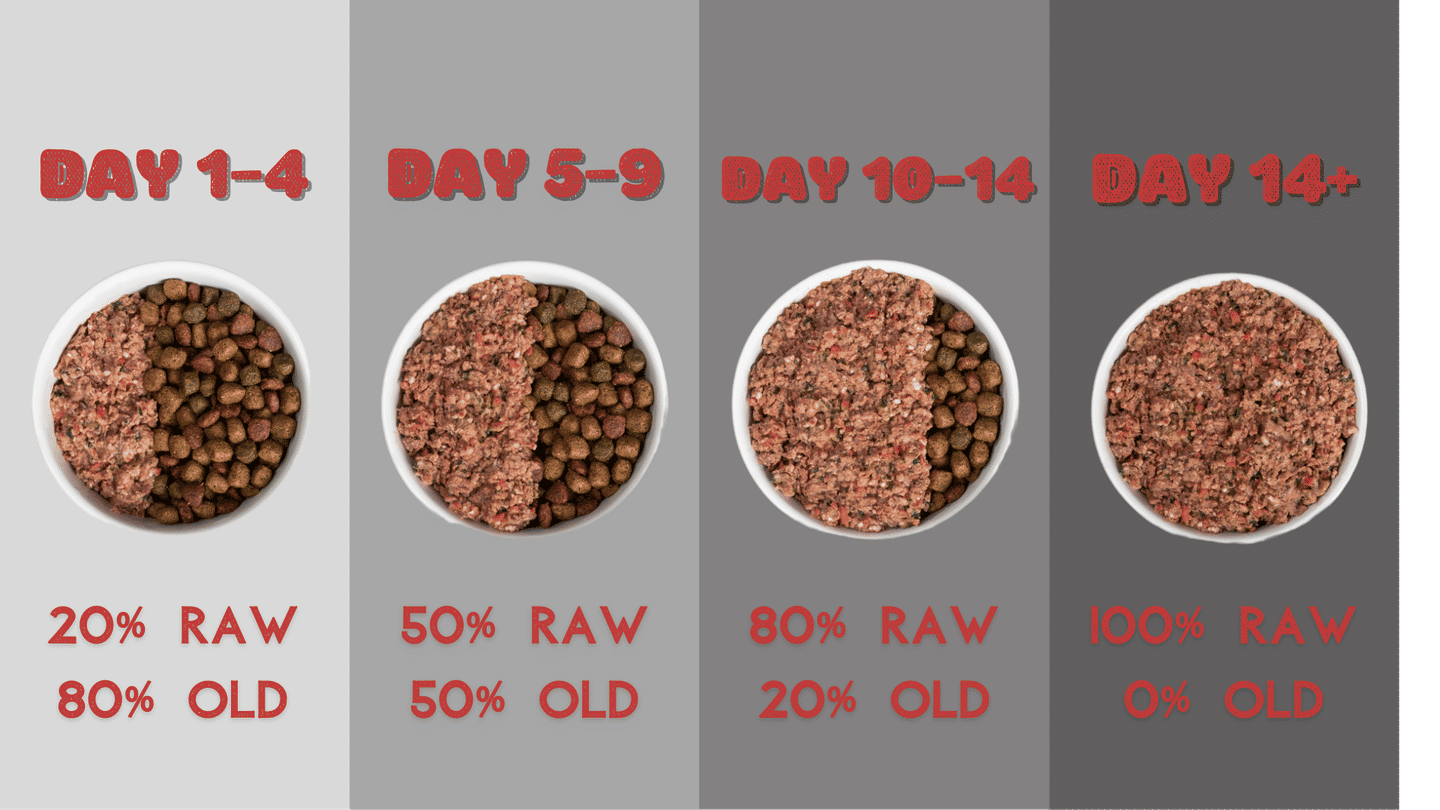Let's Talk About Raw Feeding
Even though raw dog food diets are controversial their popularity is rising. But… What is exactly a raw food diet? A raw food diet typically consists of 70% of muscle meat (often still on the bone), 10% bones (either whole or ground), 10% organ meats (such as livers and kidneys), and 10% of raw eggs, vegetables, and fruits.
.png)
Since our pets descend from wild animals, it makes sense that they would benefit from a raw diet. You might even be tempted to head to the grocery store for raw meat and bones, but that is a risky choice, and we are going to explain to you why.
The raw food from the grocery store is processed, sent to a distributor, shipped to the store, sometimes inconsistently repackaged, and then sits in a cooler for a set period. For humans, it is different as we cook our food and kill potential bacterial. But, you are going to want to protect your pets by feeding them raw food produced with a special process that locks in nutrients and prevents contamination.
Because raw meat from the grocery store has been produced in a way that assumes humans will cook it to safe temperatures before they eat it, you do not want to feed your pets the same meat raw, as they might be exposed to bacteria like Salmonella.
What about leftover bones? Cats and dogs snack on these in cartoons, but they’re not 100% safe in real life. This is because cooked bones are more brittle and prone to breaking. These shards can be very sharp and injure your pet when consumed.

Long story short, raw human food isn’t safe for dogs and cats. But, there’s good news: well-made raw pet food intended for your companion is extremely safe and beneficial to their health.
Several types of raw dog food diets have emerged, including commercially processed raw food diets that are frozen or freeze-dried and combination diets that use blends of grains, vegetables, and vitamins.
Here are some of the pros and cons of raw food feeding:
Some of the potential benefits of the raw food diet include:
- Shinier coats
- Healthier skin
- Cleaner teeth
- Higher energy levels
- Smaller stools
- It encourages your pets to eat slowly and actually chew their food
Potential risks include:
- Threats to human and dog health from bacteria in raw meat
- An unbalanced diet that may damage the health of dogs if given for an extended period
- Potential for whole bones to choke an animal, break teeth or cause an internal puncture
How can you avoid some of the risks?
- Always monitor your pet with bone-in meat.
- Get your raw food from a trusted dealership.
- Start with small amounts either alone or mixed with their current food.
How to do the transition?
Dogs are usually easy to transition to raw food. Start with small amounts either alone or mixed with their current food, and gradually increase the amount of raw while decreasing the amount of the previous diet. This can be done over a period of one to two weeks, taking more time if necessary, for more sensitive animals.
Here’s an example of how to do your pet’s transition to raw food diet:


